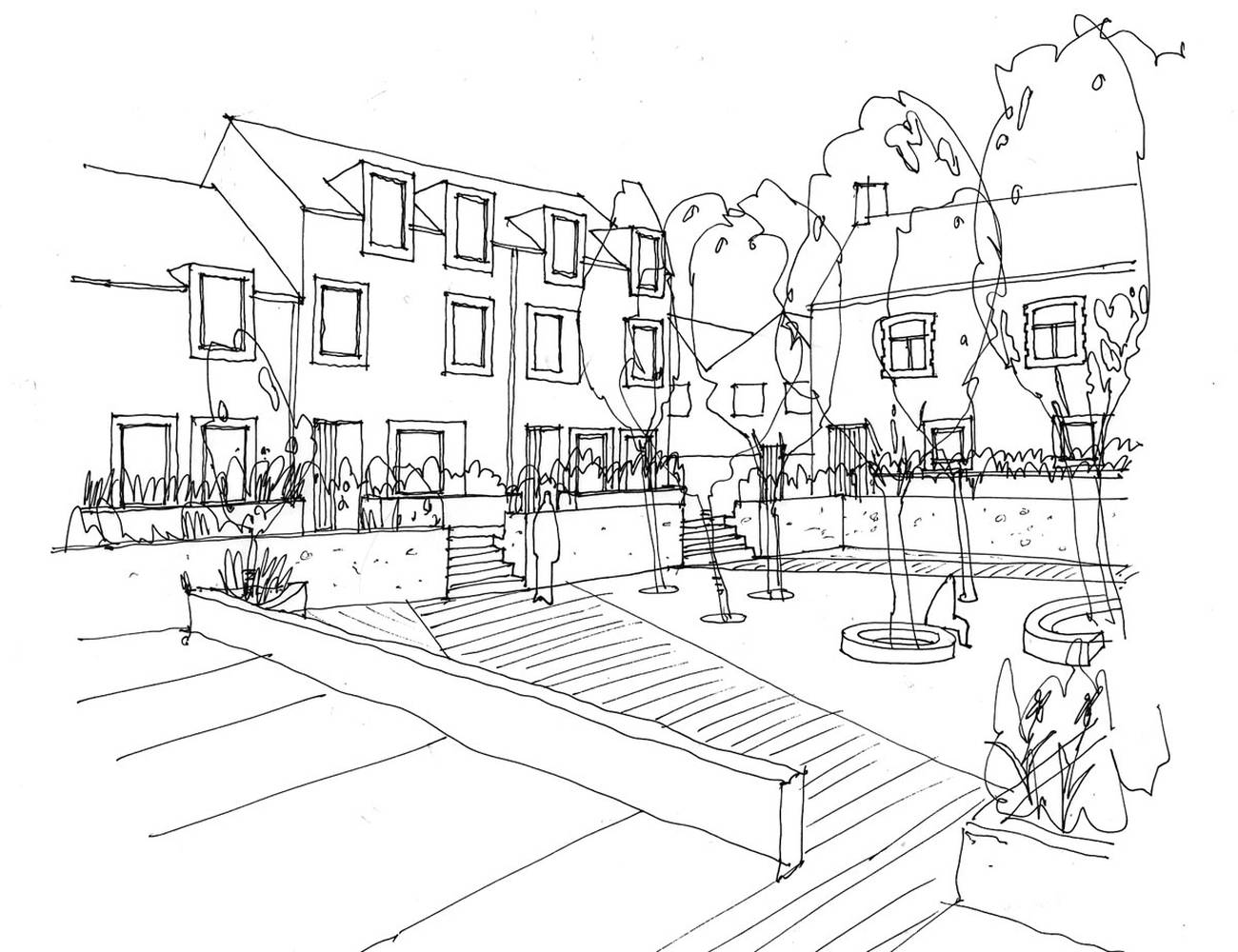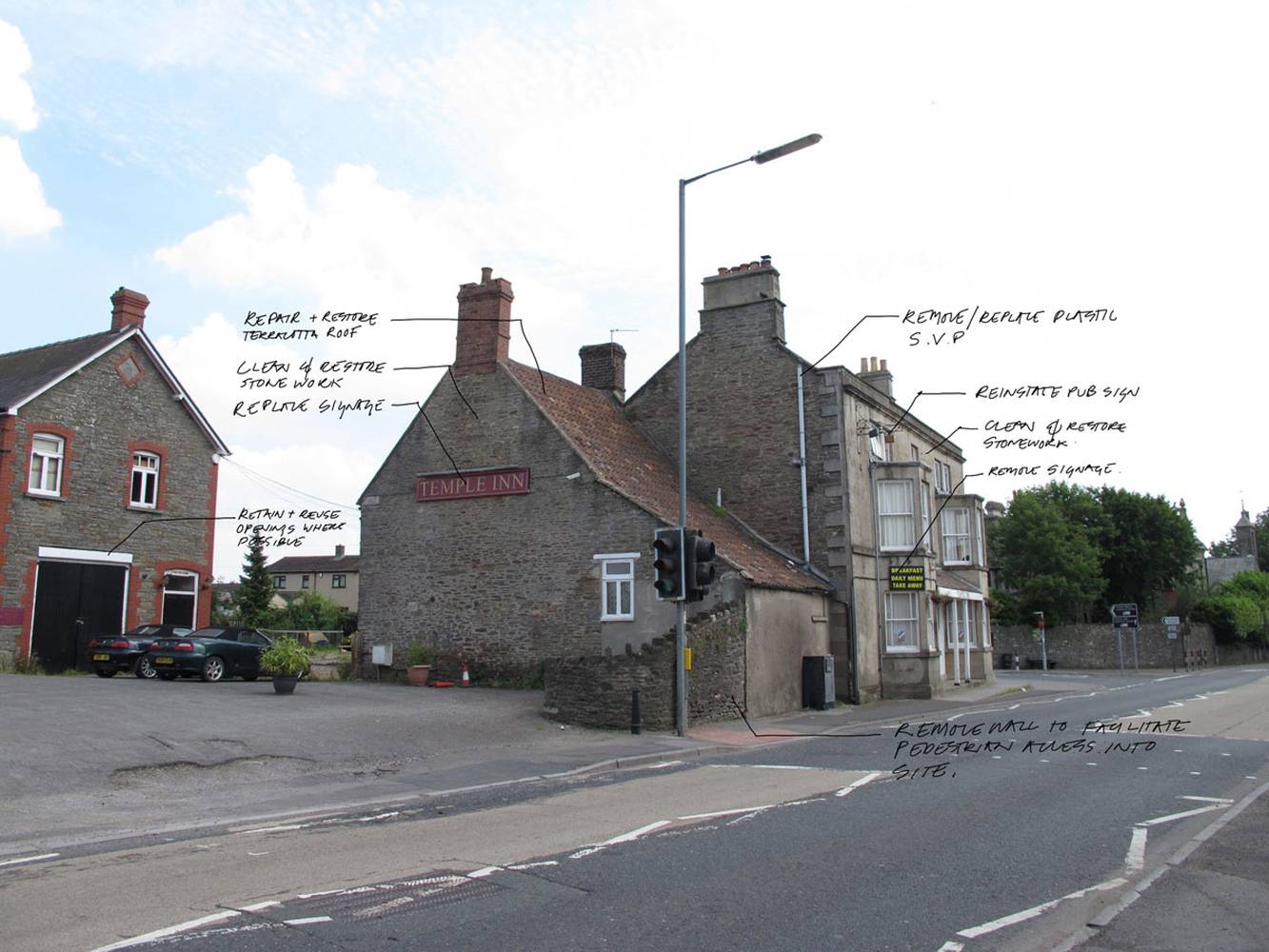Building Around Listed Buildings
September 2015
The National Planning Policy Framework (NPPF) gives‘great weight’to the conservation of heritage assets, which includes listed buildings [NPPF paragraph 132]. In many cases the impact that new buildings have on the surroundings of a listed building (its setting) will be as important as the preservation of its historic fabric. This article discusses some of the challenges encountered when building within the curtilage of a listed building.
Assuming that the proposed works do not impact on the building itself the primary concern when building close to a listed building will be the impact on its setting. The ‘setting of a heritage asset’ is defined in several documents including Annex 2 of the NPPF. Of the various descriptions I find the definition given in the document Conservation Principals (published by English Heritage), the most engaging:
“The surroundings in which a place is experienced, its local context, embracing present and past relationships to the adjacent landscape.”
A listed building’s physical and historical context should be understood as an integral part of its heritage value, and any development will be required to respect and respond to that context.
'Harm' and 'Substantial Harm'
The NPPF words the potential impact on the setting of a listed building more strongly stating that any ‘harm’ to the setting of the listed building should be clearly and convincingly justified, and that any ‘substantial harm’ to the same should be exceptional. It goes on to set out how harm can be justified, namely if the development brings ‘public benefit’ (which might include economic, social and environmental gains), or improves the viability of the heritage asset.
Striking a Balance
Development within the curtilage of a listed building is therefore almost always a balance between the potential harm caused by the development and the benefits that it brings.
The first question that needs to be understood is the level of harm that a development might cause. This is naturally dependent on the proposed building works, but is also related to the significance of the listed building. For developments of any size establishing this is likely to involve a qualified heritage consultant, whose views can be given weight in the determination process.
From an architectural point of view understanding the most sensitive areas of a development can facilitate decisions about the siting and design of the development to minimise the impact on the setting of a listed building. It is important to remember that development can also improve the setting of a listed building, and opportunities to do this should be identified where possible. We successfully used this argument at our Temple Cloud project, where a large area of car park adjacent to a listed pub building was replaced by a new building containing letting rooms.
Once the level of harm of building close to a listed building (if any) has been established this need to be balanced against public benefits or viability arguments. Heritage England suggests that ‘public benefits’ will most likely be one of the sustainable objectives of the NPPF, but that these benefits should be for the wider community and not just individuals or companies. Again at Temple Cloud the fact that our development proposals made the running of the local pub viable was an important argument in support of the development.
Engaging with the LPA
Listed buildings are one of the most subjective areas of the planning process, and every site must be taken on its relative merits. With so many variables engagement with the Local Planning Authority conservation team is very important, as in reality their assessment will often set the tone of discussions. Whether proposals cause ‘substantial harm’ to a heritage asset is, in part at least, down to the subjective view of the Conservation Officer. As such it is important to have a genuine and thorough understanding of their position, something that is usually best achieve by engaging in pre-planning consultation at an early stage whilst design proposals are still developing.
Clear and Logical Argument
When it comes to submitting a planning application the onus is on the professional team to make the case for development in terms of the balance between harm and benefit. Ideally proposals would have the support of the planning and conservation teams prior to submission, although this is not always possible particularly where more ambitious proposals are being pursued.
Whether a recommendation for approval from officers, or an approval at appeal is being targeted, it is advisable to set out the heritage constraints on a development and how these have been considered and responded to in the design. Framing the constraints in this way allows clear and convincing justification for development to run like a thread through the architectural proposals and to therefore give a wide-ranging and holistic justification for development.
Further Reading

Sketch of our Temple Cloud project, which is adjacent to a listed pub building from pre-planning discussions.

Demonstrating in principal how we can restore and repair the Temple Inn.

